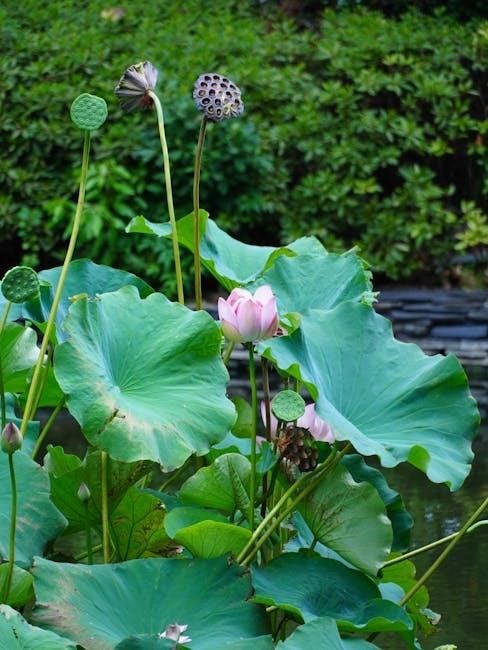The Real Christmas Book PDF: A Comprehensive Guide (Updated 11/29/2025)

Today, November 29, 2025, accessing the Real Christmas Book in PDF format is incredibly popular among musicians․ This digital version offers convenient portability and accessibility to a vast collection of cherished Christmas jazz standards․
What is The Real Christmas Book?
The Real Christmas Book, often referred to simply as “The Real Book” within musical circles, is a widely used collection of lead sheets for popular Christmas songs, primarily arranged for jazz musicians․ However, it’s crucial to understand that the term “Real Book” originally denoted a series of illegally copied and circulated jazz lead sheets․ The Christmas edition followed this model․
The PDF format has become the dominant way musicians access this collection․ These PDFs contain melodies, chord symbols, and sometimes lyrics, allowing instrumentalists and vocalists to quickly learn and perform a vast repertoire of Christmas classics․ While initially a somewhat “underground” resource due to copyright concerns, the PDF versions offer unparalleled convenience․
It’s important to note that numerous versions exist, ranging in quality and accuracy․ Some PDFs are scanned copies of older editions, while others are digitally created transcriptions․ Musicians rely on it for gigs, practice, and arranging, making it an essential resource during the holiday season and beyond․ The book’s influence extends across various genres, not just jazz․
History and Origins of the Collection

The story of The Real Christmas Book is intertwined with the broader history of “The Real Book” itself, originating in the 1970s among jazz students at Berklee College of Music in Boston․ Faced with a lack of readily available, accurate jazz charts, students began compiling their own handwritten collections․ These were initially circulated informally, often through photocopies, representing a grey area regarding copyright․
The Christmas edition emerged as a natural extension, addressing the need for jazz arrangements of popular holiday tunes․ Early versions were similarly hand-copied and shared amongst musicians․ The advent of the internet and PDF technology dramatically increased the accessibility of these charts, leading to widespread distribution – both legitimate and otherwise․
Hal Leonard Corporation eventually acquired the rights and began publishing official, legal editions of both the standard “Real Book” and the Christmas version․ However, the legacy of the original, informally compiled PDFs continues to influence how many musicians access and utilize these arrangements today, even with legal alternatives available․
Why the PDF Format is Popular
The popularity of the Real Christmas Book in PDF format stems from a confluence of practical advantages․ Primarily, PDFs offer exceptional portability․ Musicians can easily store hundreds of charts on a tablet, laptop, or even smartphone, eliminating the need to carry bulky physical books to gigs or rehearsals․ This is particularly crucial for traveling musicians․
Furthermore, PDFs are universally readable across various devices and operating systems, ensuring compatibility․ The search function within PDF readers allows for quick location of specific songs or arrangements․ Digital zoom capabilities also facilitate easy reading, even in dimly lit performance venues․
The relatively small file size of PDFs compared to audio or video files makes them easy to share and download․ While copyright concerns exist with unauthorized PDFs, the convenience and accessibility they provide have undeniably contributed to their widespread adoption within the music community․ The format simply streamlines the process of accessing and utilizing these essential jazz charts․
Legality and Copyright Considerations
The Real Christmas Book, while a staple for jazz musicians, exists in a complex copyright landscape․ The original, legally published versions are protected by copyright, meaning unauthorized reproduction and distribution – including PDFs created from scanned copies – are illegal․ Many circulating PDFs online are, therefore, considered pirated material․
Hal Leonard Corporation holds the copyright to the official publications․ Purchasing a legitimate copy, either in print or through authorized digital retailers, is the only legal way to access the charts․ Using illegally obtained PDFs carries potential legal risks, though enforcement against individual musicians is rare․
However, supporting the copyright holders ensures continued publication and updates to the book․ The ethical consideration of compensating the composers and arrangers is also paramount․ While the convenience of free PDFs is tempting, it undermines the creative process and the livelihoods of those involved․ Always prioritize legal acquisition methods to respect intellectual property rights․
Where to Find Legitimate PDF Versions
Finding a legal PDF version of The Real Christmas Book requires utilizing authorized sources․ While a completely free, legal PDF is unlikely, several options provide legitimate access․ Hal Leonard Corporation, the copyright holder, is the primary source․ Their official website (https://www․halleonard․com/) frequently offers digital versions for purchase, including PDFs․
Major online music retailers like Musicnotes․com and Sheet Music Plus also sell official digital sheet music, often including PDF downloads of individual songs or entire collections from The Real Christmas Book․ These platforms ensure proper licensing and composer compensation․
Subscription services focused on sheet music, such as Unlimited Access through Musicnotes, can provide access to a vast library, potentially including charts from the book for a monthly or annual fee․ Avoid websites offering “free” PDFs, as these are almost invariably illegal copies․ Prioritize authorized retailers to support the music community and avoid copyright infringement․
Understanding the Charting and Notation
The Real Christmas Book employs a condensed charting style common in jazz lead sheets, prioritizing efficiency for gigging musicians․ Charts typically present the melody line, chord symbols, and sometimes a basic rhythmic indication․ Expect to encounter chord changes frequently, often with alterations and extensions (e․g․, maj7, m7b5, altered dominants)․
Understanding Nashville Number System concepts is beneficial, as many musicians transpose charts on the fly․ While not explicitly using numbers, the harmonic structure lends itself to this approach․ Notation often assumes a degree of improvisational skill; written-out solos are rare․
Familiarity with common jazz chord voicings and comping patterns is crucial for interpreting the charts effectively․ The book doesn’t detail every nuance; musicians are expected to fill in the harmonic and rhythmic details based on their experience and stylistic preferences․ Be prepared to encounter shorthand notations and symbols requiring some jazz theory knowledge for accurate interpretation․
Key Composers Featured in The Real Christmas Book
The Real Christmas Book PDF showcases a remarkable collection of composers, both well-known and those whose contributions are primarily within the jazz and Christmas music spheres․ Irving Berlin is prominently featured with classics like “White Christmas” and “Silver Bells,” demonstrating his enduring influence․
Other significant composers include Mel Tormé, known for “The Christmas Song (Chestnuts Roasting on an Open Fire),” and Felix Bernard, responsible for “Winter Wonderland․” The book also highlights contributions from traditional carols arranged by jazz musicians, effectively transforming them into improvisational vehicles․
Notably, many arrangements credit individuals who popularized these tunes within the jazz idiom, rather than the original composers․ This reflects the book’s focus on jazz performance practice․ Exploring the backgrounds of these composers reveals a rich history of American songwriting and the evolution of Christmas musical traditions, all conveniently accessible within the PDF․
Common Chord Voicings and Arrangements
The Real Christmas Book PDF is renowned for its concise yet sophisticated chord charts, favored by jazz musicians․ Common voicings frequently employ shell voicings – root, third, and seventh – allowing for flexible improvisation and harmonic movement․ Extended harmonies, such as 9ths, 11ths, and 13ths, are also prevalent, adding color and depth to the arrangements․
Arrangements often feature alterations like sharp 9s and flat 9s, creating tension and release․ The book leans towards relatively straightforward harmonic structures, prioritizing clarity for ensemble playing and soloing․ Many tunes are presented in multiple keys, catering to different vocal ranges and instrumental preferences․

A characteristic feature is the use of ii-V-I progressions, a cornerstone of jazz harmony, applied to Christmas standards․ The PDF’s charts often indicate suggested substitutions and reharmonizations, encouraging musicians to personalize the arrangements․ Understanding these common voicings unlocks the full potential of the repertoire․
The Book’s Influence on Jazz Musicians
The Real Christmas Book PDF has profoundly impacted jazz musicians, becoming an indispensable resource during the holiday season and beyond․ Its standardized charts provide a common language for gigging musicians, facilitating quick learning and seamless ensemble playing․ Before its widespread adoption, musicians often relied on handwritten charts or memory, leading to inconsistencies․
The book democratized access to Christmas jazz repertoire, previously often guarded within specific circles․ It fostered a shared understanding of arrangements, enabling musicians from diverse backgrounds to collaborate effectively․ The PDF format further amplified this influence, offering instant accessibility and portability․
Countless jazz artists have built their holiday performances around the book’s contents, and it serves as a foundational text in jazz education․ Its influence extends to arranging and composition, inspiring musicians to create their own interpretations of classic Christmas tunes․ The book’s enduring popularity demonstrates its vital role in the jazz community․
Variations and Editions of The Real Christmas Book
Several variations and editions of The Real Christmas Book exist, impacting the PDF versions available․ The original, often referred to as the “handbook,” has undergone numerous printings with corrections and revisions over the years․ These changes are sometimes reflected in scanned PDF copies, leading to discrepancies․
There’s also a “Fake Book” version, which typically features simplified arrangements and chord symbols․ PDF versions of this edition are common, offering a more accessible entry point for less experienced musicians․ Furthermore, unofficial PDF compilations circulate online, often combining charts from various sources and editions․
Legitimate PDF versions are usually sold through authorized retailers and often include features like searchable text and bookmarking․ Be aware that older PDF scans may contain errors or inaccuracies․ The 6th edition is currently the most up-to-date print version, and corresponding PDF versions strive to reflect its content․ Always verify the source and edition when downloading a PDF․

Troubleshooting PDF Issues (Viewing, Printing)
Encountering issues with Real Christmas Book PDFs is common․ Viewing problems often stem from outdated PDF reader software; ensure you have the latest version of Adobe Acrobat Reader or a compatible alternative․ Corrupted PDF files can also cause display errors – try downloading the file again from a reputable source․

Printing can present challenges․ Verify your printer settings, particularly page scaling and orientation․ Some PDFs are formatted for specific paper sizes․ If charts are cut off, adjust the scaling to “fit” or experiment with custom scaling percentages․ High-resolution PDFs may require more printer memory․
If text appears garbled, the PDF might have been created from a poor scan with Optical Character Recognition (OCR) errors․ Consider searching for a different PDF version․ For complex layouts, printing as an image might improve fidelity, though it will reduce text searchability․ Finally, ensure your PDF viewer isn’t blocking certain features․
Alternatives to The Real Christmas Book PDF
While the Real Christmas Book PDF remains a staple, several alternatives cater to different needs and budgets․ Fake Books, offering simplified chord charts, provide a less detailed but more accessible option for beginners․ Online resources like Ultimate-Guitar․com and various jazz websites host chord charts for many Christmas standards, often free of charge․
For musicians seeking interactive features, apps like iReal Pro allow for customizable chord charts, tempo adjustments, and backing tracks․ These apps often include a vast library of songs, including Christmas tunes․ Sheet music websites like Musicnotes․com offer officially licensed, printable sheet music for individual songs;
Furthermore, exploring collections of public domain Christmas carols can provide a foundation for improvisation and arrangement․ Remember to respect copyright laws when utilizing any alternative resource and consider supporting composers and publishers when possible․ These options offer flexibility and can supplement, or even replace, the traditional Real Christmas Book․
Using The Real Christmas Book for Different Instruments
The Real Christmas Book PDF’s versatility extends beyond piano and guitar, benefiting musicians across various instruments․ While primarily designed for chord-melody players, its lead sheets are adaptable․ Bassists utilize the chord changes to create walking bass lines or harmonic foundations․ Trumpet, saxophone, and trombone players transpose the melodies and harmonies to their respective ranges․
Vocalists benefit from the melody lines and chord progressions for accompaniment practice or performance․ Drummers can analyze the harmonic structure to inform their rhythmic choices and improvisations․ Understanding transposition is crucial; many musicians will need to shift the key to suit their instrument’s comfortable range․
The PDF format allows for easy annotation – marking key changes, adding personalized fingerings, or noting specific voicings․ Digital tools facilitate zooming and scrolling, making it convenient for musicians on stage or during practice․ Ultimately, the Real Christmas Book serves as a common language for jazz musicians, regardless of their instrument․

The Role of Transposition and Key Changes
Within the Real Christmas Book PDF, transposition is a fundamental skill for musicians․ The book isn’t always presented in keys convenient for all instruments․ Vocalists frequently need adjustments to match their vocal range, and instrumentalists often transpose to optimize playability․

Understanding key signatures and intervals is vital for accurate transposition․ Musicians must be able to quickly shift melodies and chord progressions while maintaining the song’s harmonic integrity․ The PDF format allows for digital annotation, making it easy to mark transposed keys directly onto the sheet music․
Many tunes appear in multiple keys within the book, offering some flexibility․ However, being proficient in transposition expands the repertoire significantly․ Recognizing common key changes – moving a song up a whole step or down a minor third – streamlines the process․ Mastering this skill unlocks the full potential of the Real Christmas Book, enabling musicians to collaborate effectively across diverse instrumental setups and vocal ranges․

Resources for Learning Christmas Jazz Standards
Supplementing your Real Christmas Book PDF with external resources greatly enhances learning․ Numerous online platforms offer backing tracks, tutorials, and analyses of these standards․ Websites like YouTube host countless performances and instructional videos, demonstrating various interpretations and improvisational approaches․
Dedicated jazz education sites provide chord charts, lead sheets, and detailed harmonic breakdowns․ Forums and online communities allow musicians to connect, share arrangements, and ask questions․ Consider exploring resources focused on jazz improvisation techniques, such as scales, arpeggios, and chord voicings․

Furthermore, many musicians create and share their own arrangements and transcriptions online, expanding the available repertoire beyond the core Real Christmas Book selections․ Utilizing these resources alongside the PDF fosters a deeper understanding of the music and accelerates skill development․ Don’t underestimate the value of listening to classic jazz recordings of these tunes to internalize the style and phrasing․


























































































